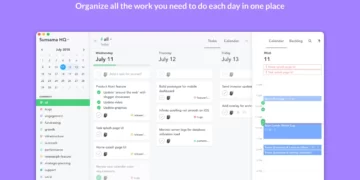When it comes to navigating the digital world, the computer keyboard is an essential tool that we often take for granted. It’s the gateway to our thoughts, our ideas, and our virtual adventures. But have you ever stopped to really look at a computer keyboard? In this article, I’ll take you on a visual tour of what a computer keyboard looks like, from its familiar layout to the hidden features that make it a powerhouse of productivity. So, sit back, relax, and let’s dive into the world of the humble yet mighty computer keyboard.
At first glance, a computer keyboard may seem like a simple array of keys, but there’s much more to it than meets the eye. The standard layout consists of a series of keys arranged in a specific pattern, designed to mimic the familiar typewriter layout. From the QWERTY arrangement of the letters to the dedicated rows for numbers, function keys, and special characters, every key has a purpose. But it doesn’t stop there. A closer look reveals additional features like the arrow keys for navigation, the modifier keys for shortcuts, and even multimedia keys for controlling your favorite tunes or videos. So, let’s not judge a keyboard by its cover, because there’s a whole world of functionality waiting to be explored.
The Standard Layout of a Computer Keyboard
The standard layout of a computer keyboard is designed to mimic a typewriter layout, with keys for letters, numbers, function keys, and special characters. It may seem like a simple arrangement of keys, but it is actually a powerful tool with various features and functions. Let me take you through the key elements of a standard computer keyboard:
- Alphanumeric Keys: This section comprises the letters of the alphabet, numbers, and special characters. These keys are used for typing and entering data into a computer.
- Function Keys: Located at the top row of the keyboard, the function keys (F1 to F12) provide quick access to specific functions in computer programs. For example, F1 often opens the help menu, while F5 is commonly used for refreshing a page.
- Navigation Keys: The arrow keys (up, down, left, and right) are essential for navigating documents, websites, and other content. They allow you to move the cursor or selection in different directions without using a mouse.
- Modifier Keys: These special keys include Shift, Ctrl (Control), Alt (Alternative), and the Windows or Command key on a Mac. By combining the modifier keys with other keys, you can perform shortcuts and access additional functions. For instance, holding Ctrl and pressing C copies selected text.
- Numeric Keypad: This section is typically located on the right side of the keyboard and consists of a set of keys representing numbers and basic arithmetic operators. It enables faster numeric data entry and calculations.
- Special Function Keys: Many keyboards have additional keys specifically designed for multimedia control, such as play, pause, volume control, and launching email or web browsers. These keys provide convenient access to common functions without requiring you to navigate through menus.
By familiarizing yourself with the standard layout of a computer keyboard and its various elements, you can enhance your productivity and efficiency while using a computer. But don’t forget, keyboards can also have additional features, like backlit keys or ergonomic designs, which can further enhance the typing experience. So, take some time to explore the hidden features and functionality of your keyboard and make the most of this essential tool.
Understanding the QWERTY Arrangement
When it comes to computer keyboards, the arrangement of the keys is an important aspect to understand. The most common layout used today is the QWERTY arrangement. This arrangement gets its name from the first six keys on the top row: Q, W, E, R, T, and Y.
The QWERTY arrangement was developed in the 19th century and has remained the standard ever since. Its purpose was to prevent mechanical typewriters from jamming by placing commonly used letters apart from each other. This design principle continues to be used in modern keyboards, even though mechanical limitations are no longer a concern.
Understanding the QWERTY arrangement is crucial for efficient typing. Here are a few things to keep in mind:
- Letter Placement: The letters are arranged in a way that allows you to type common words and phrases with minimal finger movement. This means that frequently used letters like A, S, and D are positioned for easy access with the left hand, while common vowels like E, I, and O are within reach of the right hand.
- Function Keys: Along the top row, above the letter keys, you’ll find a series of function keys. These keys serve various purposes, such as adjusting volume, brightness, or accessing specific functions within software programs. Each function key may have a different role depending on the software you’re using.
- Modifier Keys: To the left and right of the spacebar, you’ll find modifier keys, such as Shift, Ctrl, and Alt. These keys modify the behavior of other keys to perform specific actions or shortcuts. For example, holding down the Shift key while pressing a letter key allows you to type the uppercase version of that letter.
- Numeric Keypad: On the right-hand side of the keyboard, you’ll find a separate section called the numeric keypad. This section includes numbers, mathematical symbols, and additional function keys. It’s useful for entering numeric data quickly, performing calculations, or navigating spreadsheets.
- Navigation Keys: The arrow keys, which are typically located in an inverted “T” shape, allow you to navigate through documents, web pages, and menus. These keys are essential for moving the cursor smoothly and precisely.
The Purpose of Each Key on a Keyboard
When looking at a computer keyboard, it’s important to understand the purpose of each key and how they can enhance our typing efficiency and productivity. Let’s take a closer look at the different types of keys and their functions:
- Alphanumeric Keys: These keys make up the main part of the keyboard and include letters, numbers, and special characters. They are used for typing text and entering data.
- Function Keys: Located at the top row of the keyboard, function keys (F1, F2, F3, etc.) serve specific functions in different computer programs. They can be customized to perform various tasks, such as opening help menus, saving files, or activating specific program features.
- Modifier Keys: At the bottom row of the keyboard, you’ll find modifier keys such as Shift, Ctrl, and Alt. These keys are used in combination with other keys to create shortcuts and access additional functionalities.
- Navigation Keys: These keys include the arrow keys (up, down, left, right) and the Home, End, Page Up, and Page Down keys. They allow you to navigate through documents, web pages, and spreadsheets.
- Numeric Keypad: Located on the right side of most keyboards, the numeric keypad is used for quick numeric data entry. It’s particularly useful for tasks like spreadsheet calculations, data entry, and navigating through financial software.
- Special Function Keys: Some keyboards have special buttons that provide quick access to multimedia controls. These keys allow you to play, pause, stop, adjust volume, and navigate through media files without reaching for your mouse or opening additional programs.
Understanding the purpose of each key on a keyboard can greatly improve your typing speed, efficiency, and overall productivity. By becoming familiar with the layout of your keyboard and practicing the use of its different keys, you’ll be able to navigate through tasks and programs with ease.
Additional Features and Hidden Functionalities
One of the great things about computer keyboards is that they often come with additional features and hidden functionalities that can enhance your typing experience and productivity. These features are designed to make your life easier and help you navigate through applications and programs more efficiently. Let’s take a closer look at some of the common ones:
1. Multimedia Keys – These special function keys are typically located at the top or side of the keyboard. They allow you to control various multimedia functions such as volume control, play/pause, previous/next track, and even launching specific applications. With a simple press of a key, you can conveniently manage your music, videos, and other multimedia content without having to switch windows or use your mouse.
2. Macro Keys – Some advanced keyboards come with customizable macro keys. These keys allow you to assign complex commands or sequences of actions to a single key. For example, if you frequently perform a series of repetitive tasks, you can program a macro key to automate those actions and save yourself significant time and effort.
3. Backlit Keys – Many keyboards now come with backlit keys, which can be particularly handy for those who often work in dimly lit environments or prefer to use their computers during nighttime. Backlit keys make it easier to see the keys and labels, reducing the risk of typing errors and improving overall accuracy.
4. Ergonomic Design – Some keyboards incorporate an ergonomic design that aims to minimize hand and wrist strain. These keyboards often feature a split or curved layout, adjustable wrist rests, and keys positioned at angles that align with natural finger movements. Using an ergonomic keyboard can help reduce the risk of repetitive strain injuries and promote long-term comfort during extended typing sessions.
Remember, familiarizing yourself with these additional features and functionalities can significantly improve your typing experience and productivity. Take the time to explore and utilize them to their full potential. Keep practicing and refining your typing skills, and soon you’ll become a keyboard wizard!
Now let’s move on to the next section, where we will discuss the importance of keyboard shortcuts in improving efficiency and saving time.
Taking a Closer Look at Navigation and Modifier Keys
When it comes to understanding the layout and functionality of a computer keyboard, it’s important to pay special attention to the navigation and modifier keys. These keys play a crucial role in improving typing efficiency and navigating through various applications. Let’s dive deeper into these keys and their functions.
Navigation Keys
Navigation keys, also known as arrow keys, are typically located in a cluster on the right side of the keyboard. They consist of four arrow-shaped keys pointing in different directions: up, down, left, and right. These keys are used to move the cursor or selection one character or line at a time in the desired direction. Navigation keys are particularly useful when editing documents, navigating through spreadsheets, or browsing the web.
Modifier Keys
Modifier keys are an essential part of the keyboard that alter the normal function of other keys when pressed in combination. The most common modifier keys are Shift, Control (Ctrl), and Alt (or Option on Mac). These keys work in conjunction with other keys to perform specific actions or execute keyboard shortcuts. Here’s a breakdown of their functions:
- Shift: Pressing the Shift key simultaneously with a letter or symbol key capitalizes the letter or accesses the alternate character on the symbol key.
- Control (Ctrl): When used with other keys, the Ctrl key allows you to perform a wide range of functions, such as copying, pasting, undoing, and redoing actions. It’s commonly used in combination with other keys to execute shortcuts.
- Alt (or Option on Mac): The Alt key provides alternative options or functions when used in combination with other keys. It’s often used to access menu options, shortcuts, or special characters.
Understanding the functionality and proper use of navigation and modifier keys is crucial for improving efficiency and productivity while typing. By mastering these keys, you can navigate through documents, execute shortcuts, and perform actions with ease.
In the next section, we will explore the numeric keypad and its usefulness in data entry and calculations.
Multimedia Keys: Controlling Your Favorite Tunes and Videos
Now let’s explore another set of keys on a computer keyboard that can come in handy when enjoying multimedia content. These are the multimedia keys, which provide convenient shortcuts for controlling music, videos, and various multimedia functions on your computer.
Functionality and Placement:
Multimedia keys are typically located in a separate section above the function keys or on the sides of the keyboard. They are designed to enhance your multimedia experience by allowing you to easily adjust volume, play or pause music, skip tracks, and control other media functions right from the keyboard.
Common Multimedia Keys:
Here are some common multimedia keys you may find on your keyboard:
- Volume Control: These keys usually consist of a speaker icon and allow you to increase or decrease the volume of your speakers or headphones.
- Play/Pause: Pressing this key allows you to play or pause the currently playing media, whether it’s music or a video.
- Next/Previous Track: These keys let you skip to the next or previous track in your playlist without having to switch to your media player.
- Mute: This key instantly mutes the audio, providing a quick way to silence your computer.
- Media Player Launch: Some keyboards even have dedicated keys to launch your default media player, making it even more convenient to start enjoying your favorite tunes or videos.
Why Are Multimedia Keys Useful?
Having multimedia keys on your keyboard saves you the hassle of manually adjusting settings in media players or searching for the right controls on your screen. With just a press of a button, you can effortlessly control your music playlist, switch to the next video, or adjust the volume to your desired level.
By incorporating multimedia keys into your workflow, you can easily switch between work and play without interrupting your productivity. So, whether you’re a music lover, a movie enthusiast, or you simply enjoy watching occasional videos, multimedia keys provide an added level of convenience and efficiency.
In the next section, we’ll delve into the world of special function keys and their usefulness in various applications and software.
Conclusion
The computer keyboard is an essential tool that allows us to interact with our computers efficiently. It is designed with a specific layout, including alphanumeric keys, function keys, and multimedia keys, to cater to different user needs.
In this article, I discussed the functionality and placement of multimedia keys on a computer keyboard. These keys are strategically placed to enhance the multimedia experience, providing quick access to volume control, play/pause, next/previous track, mute, and media player launch. By incorporating multimedia keys into our workflow, we can seamlessly switch between work and play without interrupting productivity.
Additionally, I mentioned the usefulness of multimedia keys in saving users the hassle of manually adjusting settings in media players or searching for controls on the screen. With just a press of a button, we can control our media playback effortlessly.
In the next section, I will delve into special function keys and their usefulness in various applications and software. Stay tuned for more insights on how computer keyboards are designed to optimize our digital experience.
Frequently Asked Questions
Q: What are multimedia keys on a keyboard?
A: Multimedia keys are special keys on a computer keyboard that allow users to control media playback and volume directly from the keyboard, without the need to manually adjust settings in media players or search for controls on the screen.
Q: What functions can multimedia keys perform?
A: Multimedia keys can perform various media functions such as adjusting volume, playing or pausing music, skipping tracks, muting audio, and launching media players.
Q: Why are multimedia keys useful?
A: Multimedia keys are useful because they enhance the multimedia experience by providing easy access to media controls. Users can switch between work and play without interrupting productivity and can conveniently control media playback without having to navigate through menus in media players.














